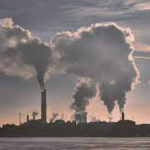 Donald Trump promised to revive the coal industry, but it is President Joe Biden who is seeing a big comeback for the fossil fuel.
Donald Trump promised to revive the coal industry, but it is President Joe Biden who is seeing a big comeback for the fossil fuel.
US power plants are on track to burn 23% more coal this year, the first increase since 2013, despite Biden’s ambitious plan to remove carbon emissions from the power grid. The rebound comes after consumption by utilities plummeted 36% under Trump, who had cut environmental regulations in an unsuccessful effort to increase fuel.
That will boost emissions at a time when Biden and other world leaders are preparing to meet in Scotland in a few weeks, hoping to reach an agreement on reducing fossil fuels in a last-ditch effort to save the world from climate change. The boom is being driven by rising natural gas prices and a global energy crisis that is forcing countries to burn fuel to keep up with demand. It is also a stark reminder that government policy can drive energy markets, but cannot control them.
As the world emerges from the coronavirus pandemic, reopening economies are driving a huge rebound in energy demand. But natural gas is in short supply, creating shortages at a time when wind and hydro have been unreliable in some regions. Europe and Asia have been hardest hit, with markets skyrocketing, blackouts in places like India, power shortages in China and the threat of outages in other countries. Energy prices are also skyrocketing in the US, though not to the same extremes.
Coal will provide about 24% of US electricity this year, after falling to 20% in 2020, a historic low after years of efforts to push utilities toward clean energy and amid cheap natural gas supplies.
According to Energy Information Administration forecasts, US utilities are poised to burn 536.9 million short tons of coal in 2021, up from 436.5 million in 2020.
Coal in the Central Appalachia region has risen 39% since the start of the year to $75.50 a tonne, the highest since May 2019. Prices in other regions are lower, but rising.
According to Ernie Thrasher, CEO of Xcoal Energy & Resources, the largest US exporter of the fuel, demand for coal is likely to remain strong in the coming year.
Coal consumption plummeted under Trump in large part because utilities shifted to gas, which was much cheaper at the time, and increasingly embraced renewables as the cost of wind and solar fell. The decline was also the result of key policy decisions by his predecessor Barack Obama. And although Trump has tried to revive the industry, legal challenges and the risk of an unpredictable regulatory environment have discouraged long-term investment in coal.
Similarly, Biden’s policies are likely to lead to further reductions in coal use. He is pursuing structural changes that include tax incentives and new market rules that will guide the decisions of energy companies.
The transition is well underway, but it will not end tomorrow.
.gif) Loading
Loading

